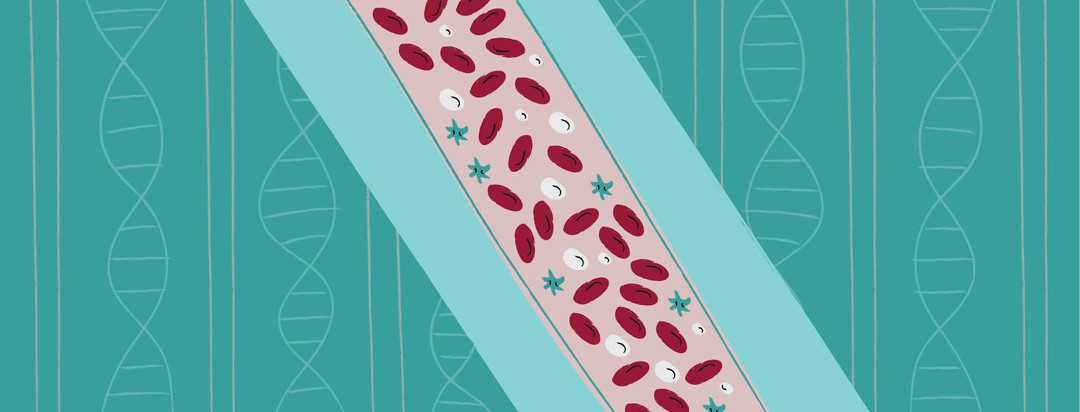What Is Polycythemia Vera?
Polycythemia vera is a type of blood cancer called myeloproliferative neoplasm, or MPN. In polycythemia vera, the bone marrow produces too many red blood cells. In many cases, people with polycythemia vera have excess white blood cells and platelets, as well.1-3
The stem cells in our bone marrow produce 3 main types of blood cells:1-3
- Red blood cells, which carry oxygen to nourish our cells
- White blood cells, which fight infection
- Platelets, which cause our blood to clot and stop bleeding
Immature cells in the bone marrow called stem cells are supposed to mature into different kinds of blood cells. But in people with polycythemia vera, a mutation in their genes causes their stem cells and blood production to malfunction. Instead of multiplying and functioning normally, the irregular cells begin to grow uncontrollably. This crowds out normal blood cells that keep our bodies healthy. The different varieties of MPN depend on the type of cells that are affected.1-3
How does polycythemia vera develop?
Polycythemia vera is very rare. It begins when a stem cell in the bone marrow undergoes a mistake, or mutation, in its genes. Genes exist in every cell and serve as an instruction manual for the cell’s functioning and reproduction.1-3
Experts do not know exactly what causes the initial stem cell to mutate. When the mutated cell copies itself and divides, the mistake is passed onto the daughter cells, which themselves begin to divide and grow without stopping. The result is that the body produces too many red blood cells.1,2
The extra cells cause the blood to thicken and slow, becoming prone to clotting, or clumping together. When clots form in the blood, you are at higher risk of more serious complications, such as stroke, heart attack, or pulmonary embolism, which happens when an artery in the lungs becomes blocked. With polythycemia vera, abnormal bleeding can occur, as well.1-3
Risk factors for polycythemia vera
Polycythemia vera is a rare disease. Its exact cause is not known, but certain risk factors may increase your risk of developing the disease. These include:1,4
- Gender – Men are slightly more likely than women to develop this condition.
- Age – Polycythemia vera is more common among people over 60, but it may occur at any age.
- Environment – Exposure to high levels of radiation or certain toxins may increase the risk for this condition.
- Mutation – About 95 percent of all people with polythycemia vera have a mutation in the JAK2 gene in their blood-forming cells. This mutation causes the body to make too many blood cells.
Symptoms for polycythemia vera
Polycythemia vera develops slowly and often does not cause symptoms in the early stages. Many times it is diagnosed only from a routine blood test that shows high levels of red blood cells. Sometimes the disease is diagnosed when a patient sees a doctor because of symptoms.1,2,4
Common symptoms may include:1,2,4
- Headache
- Sweating
- Ringing in the ears
- Blurred vision or blind spots
- Unexpected weight loss
- Dizziness or vertigo
- Bleeding or clotting
- Red or purplish skin
- Early feeling of fullness
- Burning and redness of the hands or feet
- Itchiness, especially after taking a shower
- Tiredness or fatigue
- Bone pain
- Night sweats
What is a common prognosis for polycythemia vera?
While there is no cure for polycythemia vera, most people with the disease live a normal life expectancy if they are treated and their disease is tracked carefully by an experienced doctor. Left untreated, polycythemia vera can be life-threatening.1-4
Treatment for this condition focuses on reducing the number of blood cells. Common therapies include:2,5
- Removing blood from your veins (phlebotomy)
- Low-dose aspirin to thin the blood
- Medicines that reduce blood cell formation
- Medicines that relieve itching
- Medicines that destroy cancer cells
You are considered low-risk if you are under 60 and have no history of blood clots. You are higher risk if you are over age 60 or have a history of blood clots.6

Join the conversation